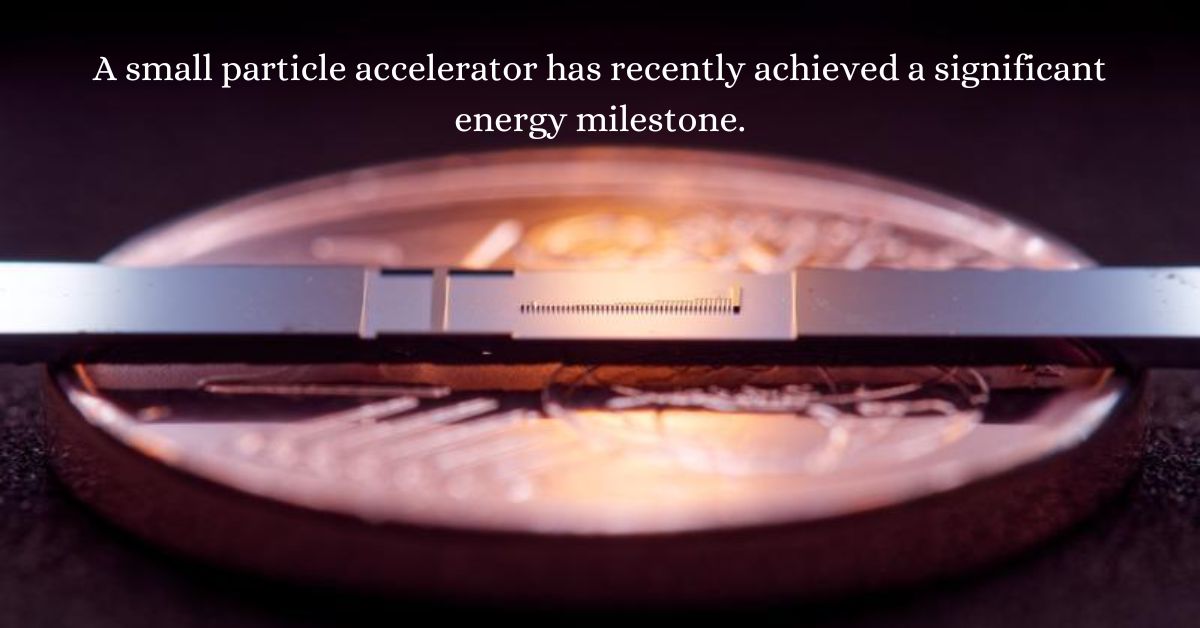A tiny particle accelerator just hit a major energy milestone: Particle accelerators are extremely beneficial in medical studies. But – like the Large Hadron Collider (LHC) – typically absorb large amounts of space. A brilliant new tool advanced at the University of Texas at Austin should remedy this.
In experiments, researchers have been able to use their particle accelerator. To generate an electron beam with a power of 10 billion electron volts (10 GeV) in a chamber measuring only 10 centimeters (4 inches).
Instrument measures 20 meters
The entire instrument measures 20 meters (66 ft) from departure to end. In evaluation, various particle accelerators that can produce 10 GeV beams have a length of some three kilometers (about 2 miles) – about 150 times longer.
The key to reducing the gadget’s size so much was combining high-power. Ultra-brief laser pulses with helium fuel laced with aluminum nanoparticles.
That debris enhances the strength of the electrons stripped from the nanoparticle through the laser. Which can be carried to the rims of the laser. Where they travel across the waves brought about by the laser on plasma waves like a surfer in the wake of a boat on a lake.
Check what physicist Bjorn Hegelich Says
A tiny particle accelerator just hit a major energy milestone: While the power of these waves can typically be overwhelming – in the same way that jet skis overcome waves released using boats – the nanoparticle provides more balance and allows the machine to be smaller.
In our accelerator, there are the nanoparticle coequals of a jet ski that release electrons at the right factor and at the right time, so they’re all sitting there inside the wave, says physicist Bjorn Hegelich of the University of Texas at Austin. ,
We get a ton of extra electrons in the wave when we want them instead of being distributed statically over the entire interplay, and that’s our secret sauce.
Wakefield laser accelerator
This form of particle accelerator, using a laser to generate plasma waves. Is known as a wakefield laser accelerator. The team says their advanced model could be helpful in studying semiconductors, testing equipment for space, and developing cancer treatments.
All of this is feasible because these devices accelerate electrons (hence the name) to extreme speeds. Generating energetic waves of electromagnetic radiation including X-rays that will be used to image molecular-scale methods.
Researchers are also eager to develop this device. But there is still a lot about the interplay between electrons. Lasers and plasma that we do not fully understand. In other words, there are a lot of exciting clinical discoveries ahead.
“At present, we have no quality model or experimental reason for a technology with such high electron energies,” the researchers write in their posted paper.
“Several theoretical scenarios are under investigation at this time and, if applicable, may cause difficulty in future courses.”
FAQs
What is the significance of the energy milestone achieved by the Small Particle Accelerator?
The significance of the energy milestones achieved by small particle accelerators is its potential to advance scientific research and technological progress.
How does the Small Particle Accelerator work?
The small particle accelerator works by using electromagnetic fields to accelerate particles to high speeds and then collide them together.
What are the possible applications of small particle accelerators?
Potential applications of small particle accelerators include medical imaging and therapy, materials science research, and fundamental physics research.
What are the future prospects for the development of small particle accelerators?
Future prospects for the development of small particle accelerators include advances in compact and portable designs, increased energy efficiency, and potential applications in fields such as medicine, materials science, and fundamental research.
Read This: How to make a working doorbell in Minecraft

